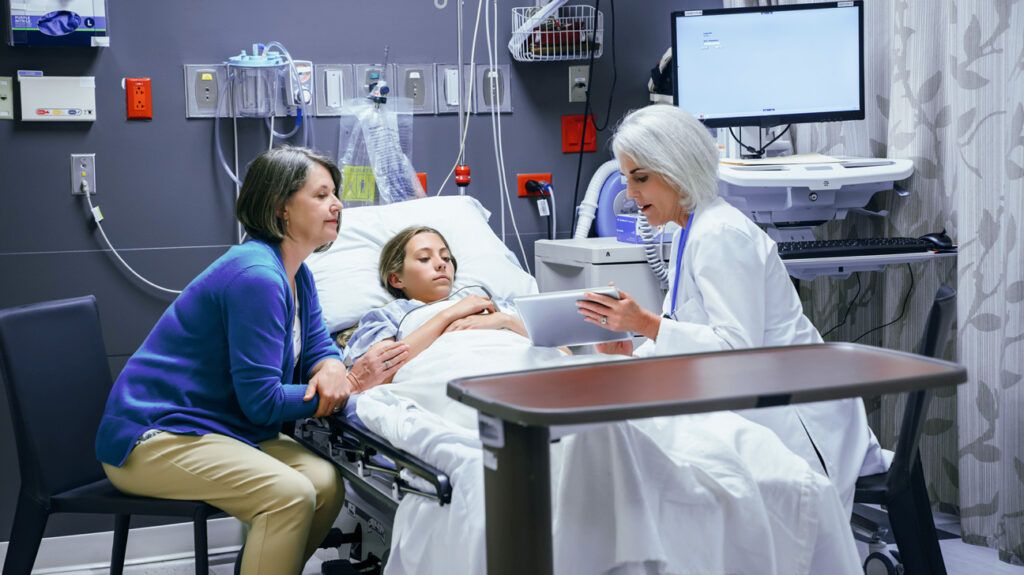Brain aneurysms are a rare condition that can develop in children with certain medical disorders. They can also occur as a result of injury or infection.
In adults, the incidence of brain aneurysms increases in people with certain risk factors, such as high blood pressure or smoking.
However, these acquired factors are virtually absent in children, and brain aneurysms at a young age can have different causes to those in adults.
This article examines brain aneurysms and explains why they may occur in children. It discusses how doctors diagnose and treat the condition and its symptoms.

An aneurysm happens when blood pressure causes a weakened blood vessel wall to bulge outward like a balloon. When this occurs in the brain, doctors call it an intracranial or cerebral aneurysm.
- Ehlers-Danlos syndrome
- Marfan syndrome
- polycystic kidney disease
- fibromuscular dysplasia (increased growth of cells in the arteries)
tuberous sclerosis (a genetic condition that causes benign tumors)coarctation of the aorta (a congenital heart condition)
Brain aneurysms may also occur in children as a result of infections, including:
- bacterial infections such as Streptococcus and Staphylococcus
- maternally acquired HIV
- syphilis
The same experts note that non-infectious blood disorders may also cause aneurysms. These include:
- thalassemia minor
- sickle cell disease
- glucose-6-phosphatase deficiency
Traumatic aneurysms usually develop from a head injury that has damaged the blood vessels in the brain.
Learn more about the causes and effects of a traumatic brain injury.
A person should seek emergency medical care if they develop any of the symptoms of SAH. The symptoms can appear suddenly and may include:
- severe headache
- persistent vomiting
- prolonged fever
- decreasing consciousness
- seizures
- coma
- muscle weakness
- cranial nerve palsies, which cause symptoms in the eyes
- meningismus, which causes neck stiffness and intolerance to light
Learn more about the symptoms and causes of a brain bleed.
Doctors can diagnose a brain aneurysm in children using a scan. This
A doctor may look at a child’s family history of aneurysms or any related conditions before deciding to perform a scan. If an aneurysm has ruptured, they may also perform a lumbar puncture.
Learn more about an angiogram to diagnose a brain aneurysm.
In children with SAH, doctors must initiate treatment immediately to stabilize the child and prevent serious complications such as rebleeding. The initial treatment may involve:
- catheter and arterial line
- painkillers and sedation
- medications such as calcium channel blockers and blood pressure medications
However, experts suggest that surgery is the definitive treatment for cerebral aneurysms in children. This may involve open, or endovascular, surgery, a less invasive procedure doctors perform using long, flexible tubes.
A doctor will weigh the risks and benefits for each child. They may decide to postpone surgery for
Learn more about surgery for an aneurysm and other brain injuries.
Brain aneurysms in children are rare.
Experts estimate they occur in
There is no evidence to suggest that it is possible to prevent an initial brain aneurysm from developing in children. Doctors may monitor children with conditions that are risk factors for an aneurysm or a family history.
However,
Research suggests that doctors must follow up on children who have had a brain aneurysm for life using imaging and other clinical methods. This is to monitor or detect rebleeding or reoccurrence.
Brain aneurysms can develop in children with certain medical disorders, but this is rare. They can also happen due to a head injury or infection. Doctors may diagnose a brain aneurysm by looking at a child’s medical and family history and using different types of scans.
A child may need open or endovascular surgery and require lifelong monitoring by medical professionals to help detect reoccurrence.
